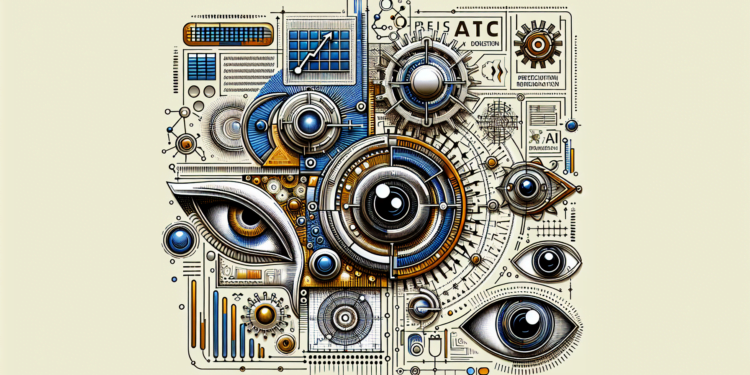The essence of modern artificial intelligence lies in its capacity to transform vast amounts of data into knowledge and action. From the fundamental permutations of Turing’s theories of computability and the symbolic logic of McCarthy and Minsky, technological and theoretical advancements have culminated in systems that rival and, at times, surpass human cognitive abilities in specific tasks.
Recent Advances and Underlying Theories
Deep Neural Networks and Deep Learning
Deep learning, a subfield of machine learning, has unearthed revolutionary paradigms through deep neural networks (DNNs). DNNs, structures modeled after the human brain, with their self-learning and adaptive capabilities, have enabled breakthroughs in pattern recognition and natural language processing. The refinement of backpropagation algorithms, batch normalization, and advanced activation functions like ReLU have been crucial for the field’s accelerated progress.
Generative Adversarial Models
A notable evolution is the introduction of Generative Adversarial Models (GANs). In these, two neural networks compete: a generative one, which produces data; and a discriminative one, which evaluates its authenticity. This methodology has increased accuracy in image synthesis and audio generation, and has opened new horizons in unsupervised learning.
Deep Reinforcement Learning
Deep reinforcement learning combines DNNs with reinforcement learning to enable agents to learn by controlling policies directly from raw sensory data, optimizing actions through experimentation and reward feedback. This approach has led to notable successes in areas as complex as the game of Go and the simulation of autonomous locomotion.
Transformations in Practical Applications
Advancements in Health: Enhanced Diagnostics and Prognostics
In the field of medicine, the implementation of AI algorithms for medical image analysis has demonstrated superior aptitude in the early detection of pathologies. Recent studies in oncology utilizing specialized DNNs highlight the accuracy in tumor identification with a significant reduction in false positive and negative rates.
Innovations in Automotive: Autonomous Driving
Artificial intelligence has propelled the development of autonomous vehicles. Through sensor fusion techniques and DNNs optimized for environmental perception, these systems accurately interpret data from multiple sensors to achieve safe and efficient navigation without human intervention.
Transformation in the Service Sector: Chatbots and Virtual Assistants
AI has also reinvented machine-human interaction. Advanced chatbots are powered by natural language processors and DNNs that enable unprecedented communicative fluidity and empathy, facilitating highly personalized user experiences.
Future Perspectives and Innovative Potential
Explainable and Transparent AI
The trend towards explainable AI systems seeks to unravel the “black box” of DNNs, providing transparency and understandability in decision-making processes. This approach is vital for trust in critical applications such as healthcare and autonomous driving.
Fusion of AI and Quantum Computing
The intersection between AI and quantum computing promises to accelerate processing of data and algorithms, enhancing analytical capabilities to an unprecedented level. This synergy may lead to discoveries that transcend the current limits of processing capabilities and learning algorithms.
Advances in Collaborative Robotics
The integration of DNNs in robotics is enabling the development of collaborative robots that interact seamlessly with humans in shared work environments, increasing efficiency, safety, and ergonomics in the manufacturing industry.
Illustrative Case Studies
Case in Oncology: Deep Learning Algorithms in Cancer Diagnosis
AI in oncology has materialized in tools such as those implemented by Google Health, whose algorithm LYNA (Lymph Node Assistant) has demonstrated remarkable abilities in the identification of metastasis in lymphatic tissue images, establishing a new standard in pathological assessment.
Autonomous Transport: Waymo and Tesla
In the automotive industry, Waymo and Tesla represent two distinct approaches in implementing AI for autonomous driving. Waymo applies fully autonomous driving AI methods in complex urban environments, while Tesla integrates driver assistance features under real traffic conditions, both setting milestones in terms of safety and technological accuracy.
Evolution of Virtual Assistants: OpenAI’s GPT-3
OpenAI’s GPT-3 interface exemplifies the expanded limits of natural language processing. Capable of composing text and performing cognitive tasks with remarkable coherence, GPT-3 is shaping up as a pioneer in the next generation of human-machine interactions.
Conclusion: Navigating the Future of AI with Intellectual Precision
Artificial intelligence has transcended its sci-fi aura to become a powerful and transformative tool across multiple domains of human activity. At the dawn of a new era, it is imperative that developments in AI are conducted with an ethical and responsible focus, ensuring that technological advances align with humanity’s benefit and safety. Precision, not only in terms of algorithmic performance but in the accuracy of its integration into our society, will define the legacy of AI’s impact on the fabric of our collective future.






















